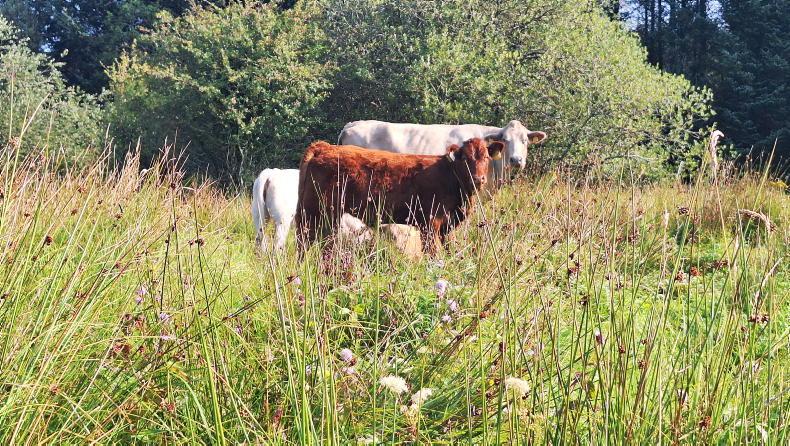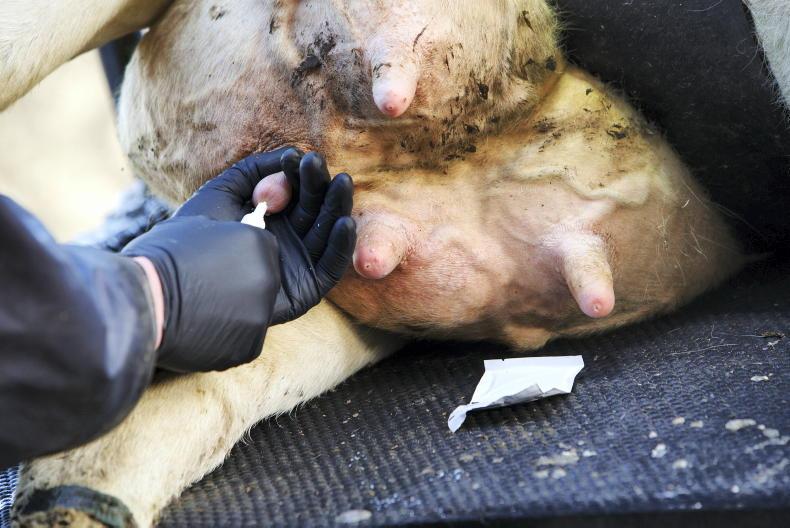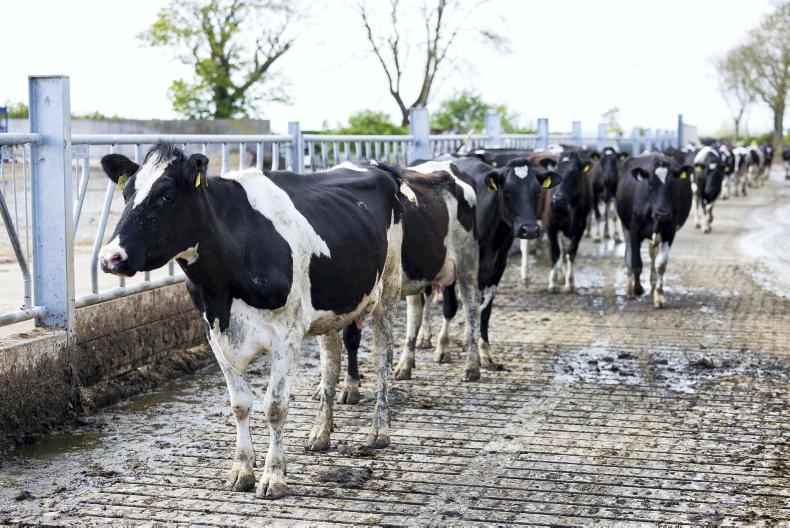The in-calf heifers left here at the beginning of December, ready to settle into their new life as dairy cows.
We operate a ‘flexi-date’ system to decide how long they stay, which basically means grass and/or silage availability at the host farm is the deciding factor in all calculations.
When I say ‘we’, I should be a bit more truthful, and admit that I have little or no input into that decision, since the owners of the cattle call the shots.
I would have liked them to stay longer for two reasons. Firstly, I have too much silage on hand (never a bad fault), and secondly, the slurry produced by the heifers has changed from having a nuisance value to something that is highly desirable.
Every extra load of organic manure to spread on my land offers a significant saving compared with buying artificial fertiliser.
AI results
For the first time in five years, we had disappointing results with artificial insemination (AI). At one point in the middle of summer, it looked like the wheels had fallen off the wagon completely, and had I been paid on performance targets, I’d have been on zero commission.
When first pregnancy diagnosed, it looked like 30% of the heifers were empty and less than half had held to AI (they had been AI’d mid-May and PD’d in early August).
When you get a result like that with any class of livestock, it absolutely shatters your confidence for a while and leaves you wondering if other farmers are as incompetent as yourself.
Second check
When we dipped the empties again in mid-October, my heart was in my mouth as the vet rummaged around inside the first couple.
When they came up positive, I could have high-fived my way round the handling pens and hugged the vet, but had to play it cool and pretend to be taking it all in my stride. Isn’t it funny how often we refuse to show our true emotions?
In the end, 10 out of 11 empties were pregnant.
Explanation
With the benefit of hindsight (story of my life, really) I think I can offer an explanation. Most of the cattle were actually in calf at the first check, but it was too early to show on the scanner.
That is only a partial explanation, because the mystery remains as to why they were running late with their dates.
I can only assume that the sexed semen may be partially responsible since the vets tell me that occasional poor batches occur for no known reason.
If this was the case, then this would have thrown a huge workload onto the Angus bull, who would be expected to contend with 20 heifers all coming back into season over one or two days.
Therefore, instead of mopping up a handful of heifers over a couple of days, he would have been suddenly mobbed with steaming admirers, eager for what he had to offer. I suspect he would be a bit overwhelmed.
Samples
Meanwhile, we also took blood samples at the time of the first scan to see what was going on. This did show lower than ideal levels of selenium, so we latched onto this as the sole cause of all problems.
I was a bit puzzled by this, since nothing different had been done, management wise, from other years, so what was suddenly wrong now?
The offending group were treated with selenium/iodine boluses, although in truth I suspected we were clutching at straws.
Problem
The upshot of the summer AI programme is the heifers are running a bit later than anticipated, and this will cause further problems for a New Zealand system that depends heavily on a tight calving pattern.
Meanwhile, I have another issue circulating in my head. With too many black bales on hand, how many should I sell? And far more importantly, how much should I charge?
Read more
Farmer Writes: dry bale silage passes the taste test
Latest lesson in lungworm control
The in-calf heifers left here at the beginning of December, ready to settle into their new life as dairy cows.
We operate a ‘flexi-date’ system to decide how long they stay, which basically means grass and/or silage availability at the host farm is the deciding factor in all calculations.
When I say ‘we’, I should be a bit more truthful, and admit that I have little or no input into that decision, since the owners of the cattle call the shots.
I would have liked them to stay longer for two reasons. Firstly, I have too much silage on hand (never a bad fault), and secondly, the slurry produced by the heifers has changed from having a nuisance value to something that is highly desirable.
Every extra load of organic manure to spread on my land offers a significant saving compared with buying artificial fertiliser.
AI results
For the first time in five years, we had disappointing results with artificial insemination (AI). At one point in the middle of summer, it looked like the wheels had fallen off the wagon completely, and had I been paid on performance targets, I’d have been on zero commission.
When first pregnancy diagnosed, it looked like 30% of the heifers were empty and less than half had held to AI (they had been AI’d mid-May and PD’d in early August).
When you get a result like that with any class of livestock, it absolutely shatters your confidence for a while and leaves you wondering if other farmers are as incompetent as yourself.
Second check
When we dipped the empties again in mid-October, my heart was in my mouth as the vet rummaged around inside the first couple.
When they came up positive, I could have high-fived my way round the handling pens and hugged the vet, but had to play it cool and pretend to be taking it all in my stride. Isn’t it funny how often we refuse to show our true emotions?
In the end, 10 out of 11 empties were pregnant.
Explanation
With the benefit of hindsight (story of my life, really) I think I can offer an explanation. Most of the cattle were actually in calf at the first check, but it was too early to show on the scanner.
That is only a partial explanation, because the mystery remains as to why they were running late with their dates.
I can only assume that the sexed semen may be partially responsible since the vets tell me that occasional poor batches occur for no known reason.
If this was the case, then this would have thrown a huge workload onto the Angus bull, who would be expected to contend with 20 heifers all coming back into season over one or two days.
Therefore, instead of mopping up a handful of heifers over a couple of days, he would have been suddenly mobbed with steaming admirers, eager for what he had to offer. I suspect he would be a bit overwhelmed.
Samples
Meanwhile, we also took blood samples at the time of the first scan to see what was going on. This did show lower than ideal levels of selenium, so we latched onto this as the sole cause of all problems.
I was a bit puzzled by this, since nothing different had been done, management wise, from other years, so what was suddenly wrong now?
The offending group were treated with selenium/iodine boluses, although in truth I suspected we were clutching at straws.
Problem
The upshot of the summer AI programme is the heifers are running a bit later than anticipated, and this will cause further problems for a New Zealand system that depends heavily on a tight calving pattern.
Meanwhile, I have another issue circulating in my head. With too many black bales on hand, how many should I sell? And far more importantly, how much should I charge?
Read more
Farmer Writes: dry bale silage passes the taste test
Latest lesson in lungworm control










SHARING OPTIONS